Don't wanna be here? Send us removal request.
Text
Explanations Of Duplex Steel UNS S32205 Pipe Fittings
These pipe fittings offer numerous beneficial qualities that stand out for various applications. It has qualities including adaptability, endurance under heavy loads, formability, lifespan, and low maintenance requirements. High tensile strength, dimensional correctness, ease of usage, and other characteristics are also present.
Wear-resistant pipe fittings made of duplex steel UNS S32205 were created for reducing applications. These pipe fittings are frequently utilized in industrial and commercial settings.
Functions Of Duplex Steel UNS S32205 Pipe Fittings
The duplex grade offers general industries cost-effective and adaptable corrosion-resistant Duplex Steel UNS S32205 Pipe Fittings. It allows for the achievement of required mechanical properties in addition to alloying elements. These pipe fittings resist atmospheric corrosion well in situations that range from mildly reducing to oxidizing. It is extremely resilient to corrosive intergranular conditions.
It possesses exceptional strength and toughness, making it a good choice for changing climates. These are produced by welding and traditional industrial processes and come in magnetic and non-magnetic varieties.
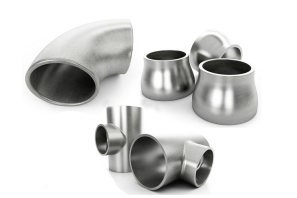
Characteristics Of Duplex Steel UNS S32205 Pipe Fittings
The hardest fittings are the duplex pipe fittings, which are best for demanding engineering applications. Both cold and hot working are the preferred production techniques.
To increase mechanical strength without sacrificing any qualities, hot working is used. Additionally, these pipe fittings are produced using a hot working method at consistent, controlled temperatures to guarantee their functionality. To strengthen the pipe fittings without sacrificing their resistance capabilities, cold working is advised.
Application Industries Of Duplex Steel S32205 Pipe Fittings
Petrochemical Industry
Chemical Industry
Oil and Gas Industry
Pulp & paper industry
Power Plant Industry
Food Processing Industry
Pharmaceuticals Industry
Energy Industry
Aerospace Industry
#Characteristics Of Duplex Steel UNS S32205 Pipe Fittings#Functions Of Duplex Steel UNS S32205 Pipe Fittings
0 notes
Text
What Are The Grade 904L Stainless Steel Valves?
Stainless steel Grade 904L Valves are available with a variety of customization options, including size and thickness. There are several uses for these stainless steel 904L butterfly valves, including gas cleaning facilities and devices for ocean water cooling.
The Grade 904L Stainless Steel Valves sometimes referred to as a super austenitic alloy, are intended for use in circumstances where resistance to corrosion and pitting is recognized as a crucial quality. Compared to other types of valves, High Temp 904l UNS N08904 Ball Valves have greater contamination resistance.
Applications Of 904L Stainless Steel Valves
Buy High Quality of SS 904L Cryogenic Valves, Alloy 904L Compression Ball Valves, Stainless Steel 904L Check Valves, DIN 1.4539 SS Port Conduit Valves, and ASTM A494 Stainless Steel 904L Pressure Reducing Valve, Offer the Best Price on a range of SS 904L Pinch Valve, 904L SS Sluice Valves Dealers. Grade 904L Stainless Steel Bellow Seal Valve Distributors in India
Characteristics Of 904L Stainless Steel Valves
Stainless Steel 904L Piston Valves, Stainless Steel 904L Non-Return Valve, Stainless Steel 904L Severe Service Control Valves, SS 904L Valve Lockouts, SS 904L Process Interface Valves, SS 904L Gauge Valve, SS 904L Float Valves Manufacturers, SS 904L Trunnion-Style Ball Valves Exporters, UNS N08904 SS 904L Double Locking Check
Ball valves made of stainless steel 904l are some of the least often used valves. The stainless steel 904l ball valves, sometimes referred to as a super austenitic alloy, are intended for usage in situations where corrosion and pitting resistance are crucial.
Reverse osmosis saltwater desalination, cleaning and decontamination cycling processes, etc. are only a few uses for 904L stainless steel valves.
0 notes
Text
What Are The Titanium Gr 2 Pipe Fittings
The Titanium Gr 2 Pipe Fittings for titanium gr2. Pipe Fittings are available from us in a variety of metals, alloys, and grades. Our premium pipe fittings are in high demand due to their numerous features and qualities. In addition to producing these Fittings in all grades of titanium, we also use numerous other materials. Our premium fittings have numerous qualities like effectiveness, precision in measuring, and toughness.
Titanium Gr 2 Pipe Fittings are ideal for usage in a variety of sectors because of their many advantages and top-notch characteristics. Titanium Gr2 Pipe Fittings are very reasonably priced when purchased from us. Our premium fittings are dependable, long-lasting, and offer exceptional corrosion resistance in a variety of environments.
Variations Of Titanium Gr 2 Pipe Fittings
Titanium Gr-2 1.5D Elbow
Titanium Gr-2 Outlet Tees and Crosses
Titanium Gr 2 Concentric Reducer/Eccentric Reducer
ANSI B16.9 Titanium Gr-2 Reducer
Titanium Gr-2 1D Elbow/3D Elbow/5D Elbow
ASME SB363 Titanium Gr-2 Lateral Tee
Titanium Grade 2 Short Stubend/Long Stubend
Titanium Grade 2 Straight Tees
Titanium Gr-2 Swedge Nipple/Pipe Nipple/Reducing Nipple
Titanium Gr.2 Barrel Nipple
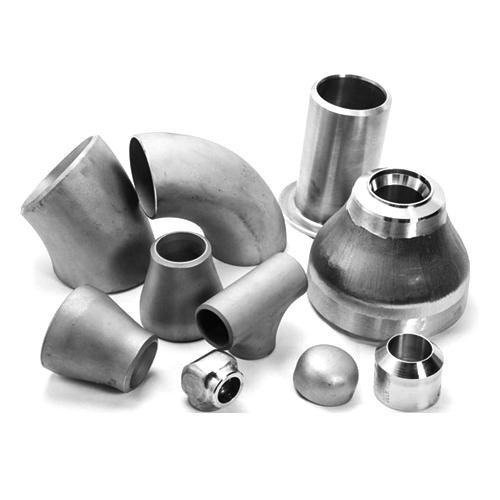
Application Of Titanium Gr 2 Pipe Fittings
Using the highest calibre raw materials, we manufacture Titanium Gr2 Pipe Fittings. To uphold better quality standards, we choose raw materials after putting them through rigorous tests.
Our team of specialists and engineers is putting a lot of effort into making Titanium gr2 Pipe Fittings of the highest calibre. To prevent flaws and production problems, they oversee the entire manufacturing process. Our professionals are monitoring the process to make Fittings more exact and durable from the time the material is chosen until the Fittings are finally delivered. While manufacturing these Fittings, we strictly adhere to the established national and international standards.
Features
a strong tensile capacity
good capacity for bearing loads
Outstanding adaptability and weldability
0 notes
Text
All Explanations Of Cupro Nickel 90-10 Pipe Fittings
90/10 Cupro Nickel Pipe Fittings. We also export our stuff to other countries. We also stock every kind of fitment and export them. According to the specifications of our customers, we produce pipe fitting in all dimensions, forms, and sizes.
We employ top-notch materials and adhere to national and international standards. 90% copper, 10% nickel, and additional compounds make up the alloy. Due to the addition of a tiny amount of manganese and iron, copper-nickel alloy offers high corrosion resistance. With low ductility and good mechanical strength, it is easily welded.
Seawater uses a copper-nickel alloy that also performs well at high pressure and temperature. Cupro Nickel 90-10 Pipe Fittings is extremely resistant to oxidation and are not easily harmed by rust or the environment. Various industries, including the chemical industry, shipbuilding, oil and gas processing, gas piping, seawater piping, etc., use copper nickel 90/10 pipe fittings.
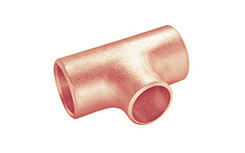
many kinds of pipe fitting
Pipe Elbow
The pipe elbow is used to fit other pipes and makes it simple to switch the direction of the pipe. The elbow pipe comes in two conventional angles of 90 and 45 degrees as well as two radius options, including a short radius and long radius. In order to change the direction of the pipe at 90 degrees, one uses a 90-degree elbow pipe, and at 45 degrees, one uses a 45-degree elbow pipe.
Pipe Tee
A pipe tee is used to distribute or collect liquid from different working sources and has a 90-degree branch in the centre. There are essentially two types of tees. Straight tees and decreasing tees both have the same branch and pipe diameters. Another variety of run pipes has a diameter that is larger than the branch's diameter.
Pipe Fittings That Cross
Four-way pipe fitting is another name for cross pipe fitting. One inlet and three outlets, or three inlets and one outlet, are used in cross pipe fittings.
The pipe fittings' complete identity, which includes the following, should be consistently marked down their entire length:
Ratings are indicated.
the grade symbol "WP" for material designation
or nominal wall thickness, grade schedule number
Warmth Code
Name or symbol of the manufacturer
0 notes
Text
Things To Know About Cupro Nickel 70-30 Valves
Cu-Ni 70/30 Valves are created using raw materials that meet national and international standards, ensuring their endurance and superiority. With the aid of cutting-edge technology and a skilled team, we are in a position to manufacture, supply, and export 70/30 Copper Nickel alloy valves of the highest possible quality.
Our UNS C71500 Cupro Nickel 70-30 Valves are renowned for their formability, weldability, and moderate strength. The outstanding corrosion resistance, mild stress corrosion cracking resistance, high strength, and last but not least, exceptional creep resistance at high temperatures, are all features of copper nickel 70/30 valves.
Specifications for Copper Nickel (Cu-Ni) 70/30 Valves
ASME B 16.10, API 600/BS1414, API 598/BS EN 12266-1
ANSI Standards B16.5, B16.25, and B16.34
1/8" to 16" in size
150#, 300#, 600#, 800#, and 1500#.
Screwed [NPT], Socket Welded, Flanged End, Screwed Parallel, and Screwed Taper are the available end connections.
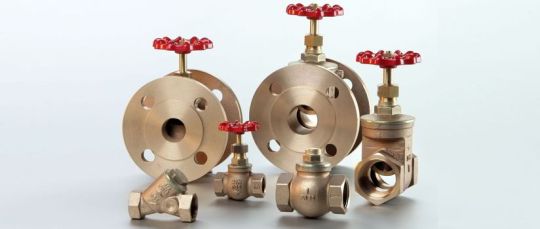
Features
High resistance against corrosion and seawater
Resistance to stress corrosion cracking
Protection against corrosion and pitting
Excellent Weldability
Strong moldability
Resistance to creep at high temperatures
Moderate power
The valve body, also referred to as the shell, serves as the primary boundary of a pressure valve. It serves as the fundamental component of a valve assembly because it is the framework that holds all the components together.
The body of a valve, which acts as its first pressure boundary, is capable of withstanding pressure loads caused by associated piping. It is attached to the intake and exit pipework via threaded, bolted, or welded connectors.
The valve-body ends are constructed utilising a variety of end connections, such as threaded, flanged, butt or socket welded, etc., to connect the valve to the piping or equipment nozzle.
0 notes
Text
What Are The Carbon Steel A234 WPB Pipe Fittings
What are Steel pipe fittings and Carbon Steel A234 WPB Pipe Fittings?
Steel pipe fittings can be used to change the direction or flow of fluids in pipeline systems. They are made of carbon or alloy steel pipe, plates, and profiles. These Carbon Steel A234 WPB Pipe Fittings typically consist of steel elbows (with a 45 or 90-degree bend), tees, reducers (with a concentric or eccentric shape), crosses, nipples, flanges, gaskets, studs, and others. Pipeline systems typically require to have the transmission direction changed, the fluid flow rate adjusted (oil and gas, water, slurry), the pipes opened or closed, etc. for industrial purposes. Therefore, steel pipe fittings will be used to fulfil these tasks.
Forging and shaping procedures are a part of the pipe fitting production process. Additionally to rolling, bending, extruding, upsetting, pressing, hammering, piercing, fusion welding, and machining. Alternatively, processes that combine two or more of these actions.

The following activities must be noted while producing steel pipe fittings
1. Harmful flaws and welding defects must not be produced.
2, The fittings must be cooled in the proper conditions to a temperature that is below the critical range after being shaped or formed at an adequate temperature. Additionally, during the cooling processes, there must be no flaws. The rate of cooling must not be faster than air.
3. Appropriate inspection must be carried out following production. (Tests for tensile strength, hardness, etc.
ASTM A234 steel pipe fittings dimensions
Standards: ANSI /ASME B16.9, B16.28, MSS-SP-43.
Outer Diameter Range: 1/2” to 48”
Thickness Range: SCH 10, ch 20, SCH 40, SCH STD, SCH 80, SCH XS, SCH 160, SCH XXS etc.
Steel pipe fittings manufacturing types in forged, threaded, butt weld, and seamless.
0 notes
Text
What Exactly Are Alloy Steel Valves?
What Exactly Are Alloy Steel Valves?
When compared to bidirectional valves, which can control flow in both directions, unidirectional valves only enable fluids to flow in one direction. Rather than a gate or ball to control the flow, the Alloy Steel Valves plug valve uses a plug. When the seat is closed, the plug is seated there. To activate the valve, the plug must be pulled away from the seat. PTFE may be coated on the plug, which is frequently constructed of more ductile materials. Following the prescribed specifications, valve sizes and pressure ratings range from 12 inches up to 150 pounds.
Applications Of Alloy Steel Valve
Water lines, oil and gas transmission lines, chemical and petrochemical plants, food processing, and power production plants are just a few of the uses for alloy steel valves. Due to variations in their chemical compositions, alloys exhibit a range of mechanical and physical properties. Fewer alloys are used to create the low alloy steel valves. These alloys are constrained by their temperature ranges, corrosion resistance, and strength values even if they have better mechanical qualities than regular stainless steel. High alloy materials with better mechanical qualities include Monel and Inconel. They are also more expensive. A gate valve made of alloy steel is employed in situations where regular steel would not hold up.
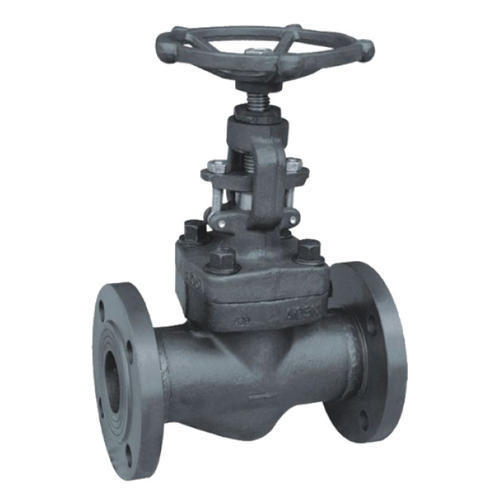
Features And Design Of An Alloy Steel Valve
resistant to oxidation and scaling
heat treatment to harden
Excellent weldability
powerful and hardy
superior ductility
Uses for Alloy Steel Valves
pipes under pressure
pressure tanks
Applications for welded tubing
Various Forms of Alloy Steel Valves
Valve made of low-alloy steel
Metal alloy gate valve
Steel Alloy Butterfly Valves
Reducing Valves Made of Cast Alloy Steel
Ball Valves Made of Chrome Alloy Steel
Alloy Steel Diaphragm Valves, Forged
0 notes
Text
What are ASTM A234 WP9 pipe fittings?
What are ASTM A234 WP9 pipe fittings?
The ASTM A234 can be referred to as a standard for pipe fitting materials, which suggests that the item has various types of alloy and carbon steel. The grade definition is WP9. Alloy Steel A234 WP9 Pipe Fittings We are one of the best manufacturers of various ASTM A234 WP9 Fittings, including reducers, elbows, tees, and caps. We never skimp on the quality of our ASTM A234 WP9 CL 1 Pipe Fittings since they are made from the best materials. We use cutting-edge technology and seasoned staff to create ASTM A234 WP9 CL 3 Buttweld Fittings.
in accordance with the demands of our client. We value innovation, which motivates us to put in more effort to deliver superior items within the allotted period. Therefore, you will receive the highest quality goods delivered to your door, whether you require WP9 Fittings made of carbon steel or alloy steel. There is no danger of delivery delays because we keep a large inventory of several types of pipe fittings in the required grade. Therefore, whether you require an AS WP9 Tee to combine or divide the fluid flow or an SA234 Gr WP9 Alloy Steel Elbow to modify the direction or angle of your pipe run, we have you covered. To various nations and states, we offer and export a variety of pipe fittings, including ASTM A234 WP9 Alloy Steel Reducers, caps, stub ends, etc. Unless otherwise requested by our clients, we safely deliver your products via the regular shipping procedure.
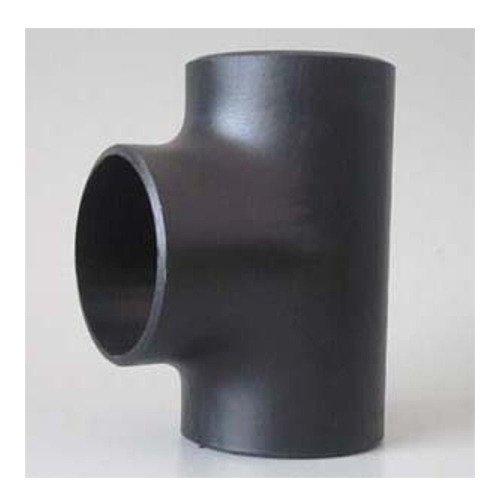
Type of pipe fittings made of ASTM A234 WP9 steel
There are welded and seamless A234 WP9 pipe fittings; welded A234 WP9 pipe fittings are built from steel plates or welded pipes, respectively. Seamless A234 WP9 pipe fittings are made from A335 P9 seamless steel pipes.
Manufacturing of pipe fittings made of steel that conform to ASTM A234
The term "worked" refers to the cast or forged nature of the manufacturing technique used to create A234 WP9 pipe fittings. Typically, the caps on ASTM A234 WP9 elbows, tees, and reducers are composed of plates. However, big-sized pipe fittings are frequently made in sections and then welded together.
0 notes
Text
Manufacturer Alloy Steel A234 WP11 Pipe Fittings
Manufacturer Alloy Steel A234 WP11 Pipe Fittings
Fittings made to ASTM A234 WP11 can be easily bent and welded. forming major connections between many pipes of various sizes according to ASME SA 234 wp11. Alloy Steel A234 WP11 Pipe Fittings The free-machining version of this grade, which is available in a bar shape for use in automatic screw machines, is designated as ANSI B16.9 Elbow A234 WP11. The most frequently used pipe fittings are those that comply with ASTM A234 Grade WP11 Class 2. These ASTM A234 Grade WP11 Fittings have rigid constructions and are created from a single body, which prevents porosity. For the fundamental transmission preparation for high-pressure applications, ASTM A234 Gr WP11 Cl2 is a reliable standard.
ASTM A234/A234M-10 Standard Specification for Pipes Fittings
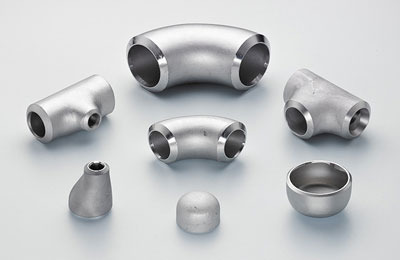
This specification includes seamless and welded fittings made of wrought carbon steel and alloy steel that comply with the most recent revisions of ASME B16.9, B16.11, MSS-SP-79, MSS-SP-83, MSS-SP-95, and MSS-SP-97. These fittings are used to fabricate pressure vessels and pressure pipework for use at both moderate and high temperatures. Fittings must be provided in accordance with Supplementary Requirement S58 of Specification A960/A960M if they deviate from these ASME and MSS specifications.
A234 WP1/ WP5/ WP9/ WP11/ WP22 / WP91 Fittings Heat Treatment
Fittings should undergo heat treatment procedures after being formed at a temperature that is beyond the critical range but below it under acceptable conditions to prevent harmful flaws brought on by too rapid cooling, but never more quickly than the rate of cooling in still air. Metal (part) temperatures used in heat treatment are those that are defined. According to paragraph 7 of specification A960/A960M, heat-treatment fittings must be treated.
WPB, WPC, and WPR Fittings
Hot-formed WPB, WPC, and WPR fittings that have undergone their final forming operation at a temperature of more than 1150 °F (620 °C) and less than 1800 °F (980 °C) do not require heat treatment as long as they are cooled in still air. 7.2.2 After being hot-formed or forged and completed at temperatures above 1800 °F [980 °C], WPB, WPC, and WPR fittings must be annealed, normalized, or normalized and tempered. Heat treatment is not necessary for hot-forged fittings NPS 4 or smaller.
0 notes
Text
Application Of Carbon Steel Valves
Carbon steel, an alloy of carbon and iron, is the least expensive metal option for pipelines Carbon Steel Valves and valves. This chemical falls under the category of an alloy that can corrode when exposed to corrosives such as carbon dioxide, hydrogen sulfite, etc. Carbon steel can be enhanced by the addition of other substances including silicon, copper, and manganese. Low carbon steel has a carbon percentage of less than 0.25%, medium carbon steel has a carbon level of between 0.25% and 0.5%, and high carbon steel has a carbon content of between 0.5% and 1.25%. It should be noted that the carbon content-based classification of carbon steel can vary from what is described below
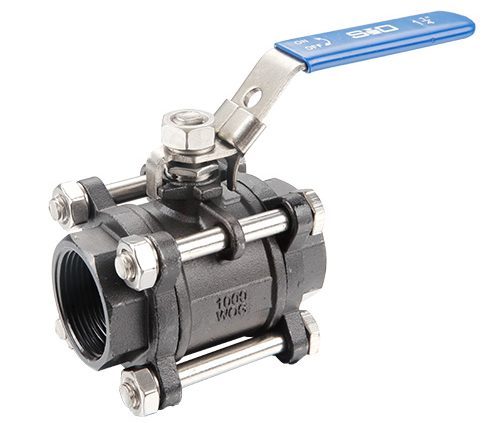
If the carbon content of an iron-carbon alloy is more than 2%, the material is called cast iron. Cast iron was a popular choice for piping swage and water pipe before the advent of plastic piping. Carbon steel can be corroded in the form of metal loss due to carbon dioxide CO2. Therefore 3 mm corrosion allowance as an average can be added to carbon steel pipe and valve bodies according to Norsok M-001, “material selection” and Norsok L-001, “piping and valves.” In addition, hydrogen-induced cracking (HIC) is a big risk for carbon steel; hydrogen atoms can accumulate in the void spaces in the microstructure of carbon steel;
After a collision, they enlarge and cause the metal to fail in various ways, such as through cracking (see Fig. 12.20). Utilizing killed carbon steel is one method of reducing HIC corrosion. In the killing process for carbon steel, the steel is deoxidized with silicon or Aluminium, resulting in homogeneous, porous-free steel.
0 notes
Text
Applications And Uses Of Alloy 20 Pipe Fittings
Applications And Uses Of Alloy 20 Pipe Fittings
Do you have any knowledge of alloy-20-pipe-fittings-forged flanges? If not, then you should read this page because it goes into detail about alloy 20 and its products. Alloy 20 Pipe Fittings are also referred to as UNS N08020, and it is a high alloy stainless steel grade with exceptional resistance to sulfuric acid and stress corrosion. This alloy grade has several different elements, including copper, nickel, chromium, and molybdenum, which work together to provide pitting resistance, crevice corrosion, and corrosion resistance. The Alloy 20 Pipe Fittings process pipes, heat exchangers, manufacturing tanks, and pickling equipment are just a few of the applications and industries that use these alloy 20 fittings and flanges.
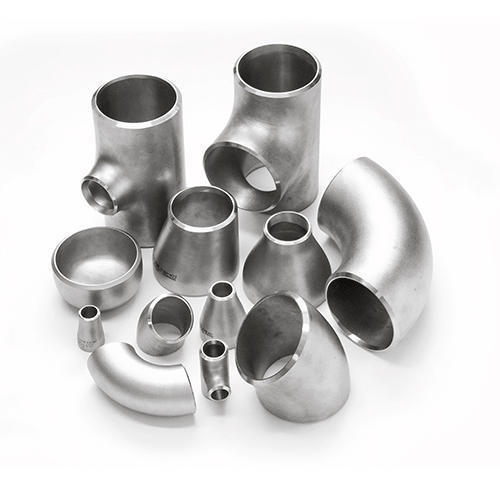
Many applications that are utilized at high temperatures and can easily tolerate harsh environments use alloy 20 flanges and fittings. Additionally, stainless steel alloy 20 flanges and fittings are available in sizes ranging from 12 NB to 8 NB, and all of these products have undergone thorough testing and inspection by quality assurance organizations. These organizations then issue certificates such as the 100% radiography test certificate, the flattening test certificate, the flaring test certificate, the micro and macro test certificate, and the third-party inspection report. These pipe fittings come in welded, fabricated, and seamless varieties.
Special Features of Alloy 20 Pipe Fittings
good corrosion resistance
very good for fabricating
fantastic mechanical attributes
Uses for Alloy 20 Pipe Fittings
Mixing troughs
chemical factories
manufacturing of dye
Processing Food
Pickling Supplies
Petrochemical Facilities
0 notes
Text
Advantages & Uses of Stainless-Steel Pipes & Tubes.
A tube, or tubing, is a long hollow cylinder used for moving fluids (liquids or gases) or to safeguard electrical or optical cables and wires.
Pipes are a hollow cylinder or a tubular section typically used to move substances which can flow. These can even be used for architectural applications.
The terms "pipe" and "tube" are used interchangeably, though minor variations exist - a tube has tighter engineering requirement than a pipe. Both pipe and tube imply a level of rigidity and permanence, whereas a hose is usually portable and versatile.
Characteristics of Stainless-Steel Pipes and Tubes
Stainless-Steel Pipes and Tubes manufacturers use an alloy of chromium and steel that form a robust and sturdy metal. It’s the chromium that makes the steel unstained and is employed primarily for the steel to be corrosion resistant. With this characteristic, these pipes and tubes need less maintenance and stand for the longest time. These are fairly lightweight and extremely durable.
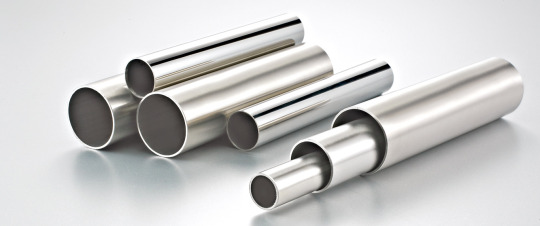
Uses of Stainless-Steel Pipes and Tubes
Here are a number of the foremost common uses of Stainless-Steel Pipes and Tubes:
• Homes and buildings: supply and exhaust piping and tubing, water pipes and curtain rods.
• Transporting materials like hot water, chemicals, oil, gas, and sulfur in varied industries.
• Automotive industry: air and water flow systems, and piping and tubing systems.
• Sewerage systems, industrial water lines, and water mains.
• Heating, ventilating and air-conditioning instrumentation.
• Construction industries: structural applications and system.
Numerous styles of Stainless-Steel Pipes and Tubes are available in the market at this time. No matter might the dimensions and form of the pipes and tubes be, these pipes and tubes will be considered used since these are the proven cost-effective and ideal answer within the growth of varied industrial products. The efficiency of operations depends on the industrial components used.
Advantages of using Stainless-Steel Pipes and Tubes
There is an extensive range of applications that demand Stainless-Steel 304 Pipes and Tubes including domestic regions, industrial offices, and automotive industries. These are very helpful and effective in various industries above all in industrial processes. As time passes and non-stop innovation, these pipes, and tubes have become an important a part of people’s lives since these are extremely effective and accessible in varied diameters and sizes. Stainless-Steel Pipes and Tubes are beneficially used wherever high level of resistance is required to tolerate external and internal pressure in a system. These pipes and tubes have the potential to handle stress for numerous piping applications. Steel Pipes and Tubes are sturdy and perform well in the toughest and harsh conditions. Steel will be used for construction and industrial pipes and tubes since its highly resistant to corrosion and warmth.
Stainless-Steel 316 Pipes and Tubes are extraordinarily helpful for indoor and outdoor applications. These are very simple to clean and require less maintenance. Stainless-Steel is recognized for its hardcore and robust quality and is definitely reusable in varied industries that create Stainless-Steel Pipes and Tubes a decent selection of piping and tubing needs. Above all, Steel Pipes and Tubes can be simply molded in any size or form depending on the preferences.
#ASTM A312 TP 304 Stainless Steel Pipe#ASME SA213 / SA249 / SA269 SS 304 Tubing#Seamless and Welded Austenitic Stainless Steel Pipe and Tube#ASTM A213 TP 304 SS Corrosion Resistance Tube#Alloy 304 Pipes & Tubes#Stainless Steel 304 Bright Annealed Pipes and Tubes#DIN 1.4401 / 1.4436 Square Pipe Dealers#ASTM A312 TP 316 Stainless Steel Pipe#ASME SA213 / SA249 / SA269 SS 316 Tubing#Stainless Steel 316 Bright Annealed Pipes and Tubes#316 SS Electropolished Pipes and Tubes Suppliers and Exporters
0 notes